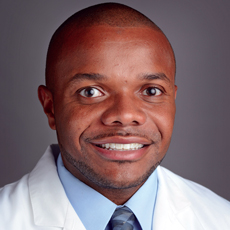
With each new year, cancer patients find continued hope that a cure or treatment for their disease will lead to longer and fuller lives. In 2016, there were 15.5 million cancer survivors nationwide, and today two out of every three cancer patients will now survive more than five years after diagnosis. In the 1970s, only half of cancer patients lived that long, according to the National Institute of Health and the National Cancer Institute.
But there’s much more that should be considered for the comprehensive care of survivors to ensure they are living a good, quality life. Individuals are living with complex impairments from their disease or its treatment. We are seeing more colon cancer survivors with new ostomies requiring specialized training for management, sarcoma patients after amputations who need prosthetics, and individuals living with brain and spinal cord cancer and their associated neurologic dysfunction.
Along with Vishwa S. Raj, M.D., and our cancer rehabilitation team, I am honored to help cancer patients recover as fully as possible and to have fulfilling lives while maximizing functional independence. Every patient is different, and we are driven to the help them optimize their function and restore meaningful quality to life in context of their diagnosis. Although there will bumps along the road with medical and functional considerations, our team continues to do the best we can to ensure a safe transition from our care to the next.
While we’re proud of the support we provide to our patients in inpatient rehabilitation facilities (IRF) and outpatient therapy centers, we know that there are some cancer patients who require a different level of care. There are patients who do not require the medical supervision of an IRF but are also not well enough to be managed in the home setting. There’s more that we must do to ensure that they live well, that their chances of rehospitalization are reduced, and that their risk of an infection or another complication after leaving the hospital is minimized. These are just a few of the metrics that define quality healthcare, but at some point, we must ask ourselves how can we provide such care while also being cost-efficient.
In 2014, Congress passed the Improving Medicare Post-Acute Care Transformation Act, or IMPACT, which requires the establishment of assessment data across post-acute provider settings, whether it be a long-term care facility, a skilled nursing facility, or a home health agency. In other words, we need to understand what is happening to patients after they leave the hospital, as reimbursement in post-acute care settings could be negatively impacted if quality care is not being delivered.
For cancer patients, currently there are two primary means in which they receive post-acute rehabilitation services – in an inpatient setting or at home. The costs for inpatient care, especially at IRF, can be substantial. However, up to 45% of the cancer patients we see in acute care consultation do not meet the IRF requirements of three hours of therapy five days a week, in addition to a doctor’s visit three days a week.
Rehabilitation at home, on the other hand, may not fully address the needs of this complex population. Some caregivers may not be well-equipped to deliver the necessary care that patients need.
According to The Associated Press-NORC Center for Public Affairs Research, just one-third of all caregivers and fewer than half of those who provide at least one type of medical care say they have any formal training, including from a medical professional, a class on senior care, or their own professional experience. Home rehabilitation, therefore, may not be the best option for many of our cancer patients who do not meet the acute-care criteria.
There needs to be a middle ground for those patients who are not ready to go home but who do not need to stay in a hospital or come to acute inpatient rehabilitation. Therefore, the Continuing Care Division, Carolinas Rehabilitation, and the Levine Cancer Institute will be among the first in the nation to explore, implement, and track outcomes of a comprehensive cancer rehabilitation program in a sub-acute facility.
Starting in January 2018, we will implement this program at Sardis Oaks, a skilled nursing facility in Charlotte, NC, that provides long-term care, short-term nursing and rehabilitation, and end-of life services. The primary goal behind this research program is to deliver comparable outcomes as other post-acute settings, but at a lower cost for the system. We also hope to establish quality-based protocols for transition of cancer rehabilitation patients into post-acute care settings and decrease hospital readmission rates. We will evaluate if certain populations have better outcomes in a sub-acute setting versus another post-acute care setting. If we are successful in this initial endeavor, we hope to expand the service to more complex oncologic diagnoses and establish one of the most comprehensive cancer rehabilitation programs in the world.
This will prepare us as Medicare continues to move toward a quality-metric reimbursement system for post-acute care as predicated by the IMPACT Act.
As this program grows in volume and successful outcomes, we anticipate that there will be continued incremental and organic growth in the sub-acute setting. It will open the door to a new but previously underserved population of cancer survivors. With improved access, patients can receive the functional care they need at the appropriate level and with the appropriate costs, regardless of the settings. It also provides further opportunity to fully utilize inpatient care within the post-acute care spectrum for oncological diagnoses.
Terrence Pugh, M.D., is a faculty physician and Associate Director, Oncology Rehabilitation at Carolinas HealthCare System.



